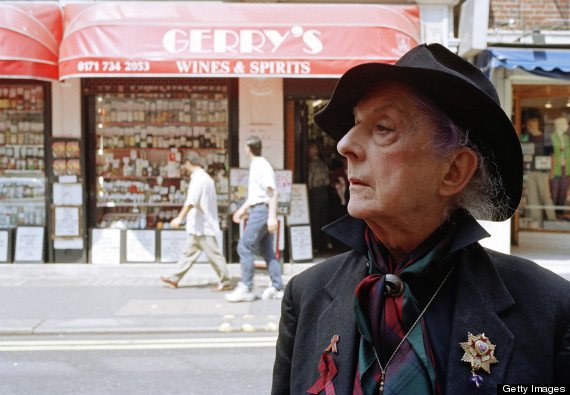
In 1993, Tilda Swinton portrayed an English nobleman next to Quentin Crisp's Queen Elizabeth in Sally Potter's film adaptation of Virginia Woolf's gender-bending novel, Orlando. In the film, Orlando, played by Swinton, subtly, surprisingly changes his sex from male to female during an extensive sleeping period. In other words, Orlando goes to sleep as a man and wakes up as a woman. Or, to put it even more simply, the act of sleeping becomes transformative.

A couple years later, in 1995, sleep became once again a central theme for Swinton when she erstwhile presented The Maybe at the Serpentine Gallery in London, a performance installation that had her sleep under a glass box during the gallery's opening hours. The reasoning behind the performance's title was, at that point, anyone's guess. It wasn't until recently, when Swinton launched a reprise of this performance at MoMA, that the title began to make sense: this new version of The Maybe is being presented as a pop-up performance that keeps everyone guessing as to when and where the actress might appear in any of the Modern's galleries. And when she does, the Twittersphere goes haywhire and throngs flock to the specified gallery to catch a glimpse of the ephemeral superstar.
Reading about Swinton's collaboration with MoMA, I couldn't help but reminisce about a certain afternoon back in 1996 that I spent in the company of Quentin Crisp where sleep would also prove to be transformative -- for me.

I first met Quentin Crisp in the early 1990s. I was at the time working as an assistant painter for the artist-duo, David McDermott and Peter McGough, and he came to visit their studio in Williamsburg one day. Crisp was then a vivid presence in the downtown art scene, and I had seen his understated one-man-show, An Evening with Quentin Crisp. But it wasn't until years later that I got to know him a little better, when my then-boyfriend Gordon, a young British artist, and I occasionally treated him to lunch. In my recently published memoir, The Autobiography of Daniel J .Isengart (written from the perspective of my partner, Daniel Isengart, in homage to Gertrude Stein's The Autobiography of Alice B. Toklas), I describe one encounter with Crisp:
At one time Filip Noterdaeme and Quentin Crisp had lunch all by themselves at Mister Crisp's favorite diner, the Cooper Square restaurant on Second Avenue.... After lunch Filip Noterdaeme walked Quentin Crisp home to his notoriously dusty boarding room on East 3rd Street. There, the two sat for a while and talked about Thomas Hardy and Miss Greta Garbo. Then Quentin Crisp decided to take a little nap and Filip Noterdaeme sitting close by watched over him. He always says the fifteen minutes he spent watching Quentin Crisp sleep taught him everything about performance art there is to know.
You may ask yourself, what could possibly be exciting about watching an octogenarian gentleman sleep? And what is it that made this a performance to begin with? But if you had known Quentin, you'd know better. You see, Quentin Crisp was the embodiment of an ideal Nietzsche has described in The Gay Science:
Giving style to one's character -- a great and rare art! It is exercised by those who see all the strengths and weaknesses of their own natures and then comprehend them in an artistic plan until everything appears as art and reason and even weakness delights the eye....
Quentin Crisp, the author of How to Have a Life-Style, turned his entire life into an act of permanent creation. Oscar Wilde would have been immensely pleased at the level of artifice he brought to even the most mundane aspects of life. His creation of the self was so complete, so absolute, that the essence of it was palpable even when he was asleep -- and I sat there, at arm's length, electrified. I looked at the delicate, lightly powdered and peaceful face that looked more like a regal, awe-inspiring mask than a human face. I also remember feeling genuinely touched by his level of trust in me that allowed him to make himself so vulnerable, alone with a young man he barely knew. The thought that he might die right then and there crossed my mind -- often enough, he had voiced his wish to die in his sleep, preferably sooner than later. I do not really know how long I sat next to his bed, waiting for him to wake up again: it was as if he had suspended time -- not just for him, but for me, his audience.
To this day, Quentin's sleeping act has been the greatest and rarest piece of performance art I have ever witnessed. He managed to do this by the sheer force of his persona. He didn't need a museum as a backdrop; he didn't need a curator like Klaus Biesenbach who is all too eager to capitalize on the public's obsession with celebrity; he didn't need Snow White's glass cage; and he didn't need fancy sheets or fans' tweets.
Quentin Crisp died in his sleep in 1999 during a visit to his native England. I like to think of his sleep performance as a rehearsal for his death. In my mind, it will never fade, wither or grow old.